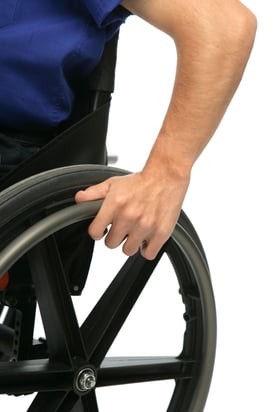Therapeutic Treatment Updates
Join Our Movement
What started as an idea has become a national movement. With your support, we can influence policy and inspire lasting change.
Become an Advocate
Aquatic Therapy
Using water as a medium for therapeutic treatment is a process that has been ongoing for years. It recently has become more available to individuals with functional issues as more pools are becoming available to individuals requiring adaptions.
In the water, buoyancy helps support the body. A person who has challenges with movement might not be able to move a limb or have difficulty doing so because gravity holds us all on earth. However, in the water, a gentle movement supported by the buoyancy of the water can allow movement to be discovered. Sharp movements in the water resist movement, but gentle motions facilitate movement. Individuals who try this therapy find the comfort of the support of the water to help them find skills they did not realize were there.
There are some precautions to take with aquatic therapy. Episodes of autonomic dysreflexia (AD) can be triggered from the pressure of the water on the body. Water should be warm, or a heated pool should be used to avoid triggering spasms (tone) and to help relax the body. An educated professional should help you set up an aquatic therapeutic program to ensure safety as well as to maximize and establish a plan to advance treatment.
Resources are available in many areas for aquatic therapy. Many pools have designated times for heating the pool for individuals who require this service. Check with your local agencies to find a qualified pool therapist. The Christopher & Dana Reeve Paralysis Foundation website has a ‘find near me’ resource app that will help you locate aquatic therapy near your home. Also, many rehabilitation centers are installing therapeutic pools because of the recognition of the value of pool therapy.
It is frustrating to hear about many of these therapies that might not be available to you. However, it is wise to know what is on the horizon or just to know about them so you can be sure to have your body ready for when they become available. Following the research can lead to thinking about therapies that you can do now, like aquatic therapy, that perhaps you just did not think about before. Nurse Linda
Pediatric Consideration: It is important to keep track of research for opportunities for your child. Following adult research can help you plan for the future for when your child becomes an adult or to integrate the ideas into your child’s life. Research usually follows the study of adults and then is adapted to the physiology of the pediatric individual.
Although stem cell therapy is not quite ready, electrical stimulation and aquatic therapies are available for the pediatric individual. Investigating these therapies is particularly helpful in stimulating the developing nervous system. Checking payment options should be attempted if you are interested in these options for your child.
